Ceramic tiles industry in this paper is viewed from a production process at first and baking and testing outlook.
Generally speaking, there are now two processes used to create ceramic tile products around the globe. The two processes differ in how tiles are dried and baked. It fires twice in the first type. This procedure involves first drying the tiles in the dryer, then baking them once at a high temperature in the oven, glazing them, and then re-baking them.
The second technique, known as single firing, omits the initial baking stage and instead sends the tile directly to the baking oven after drying in the dryer and soaking in glaze. While the firing process in the second way is quicker than in the first, the tiles are more flexible in the two-flame firing approach. Because of how crucial this is, many tile makers employ the twin fire process.
Ceramic Tiles Production Process
The production process of ceramic tiles begins by mines and raw materials are typically used to produce tiles from a variety of minerals and soils, including clay, feldspar, silica, kaolin, barium carbonate, and byproducts like sodium silicate and a variety of paints, in order to lower production costs. There are factories nearby.
The aforementioned raw materials are often brought in the form of stones, soil, and lumps from the mines, and they are crushed and ground up in this unit, which primarily consists of a crusher, ball mill, iron separator, etc. This unit is best located outside the facility and away from the production hall due to pollution and dust. The material warehouse’s silos are loaded with the crushed material by the loader. It is crucial to utilize an exact measure of the quantity of weighing since all materials are meticulously measured to ensure the product is protected.

Continuous mill feeding: Daily delivery of raw materials to silos, coupled with storage of water, lubricants, and other additives in tanks. They are then transferred to a continuous mill after being weighed in specific quantities.
Slip preparation: Because there are several types of raw materials here, these materials must be mixed and crushed in specific mills (mainly ball).
Usually, grinding is done up to a 63 micron level in order to produce a homogenous mixture. The materials listed in the feed portion of the mills enter the continuous mill so that the material crushing process can be carried out in a wetter manner (in a ball mill with ceramic balls). The consistent slurry produced by this process, after passing From specialized sieves, it is moved to storage ponds.
(Milling) Ballmill:
Ceramic pellets with a high level of abrasion resistance are manufactured in a cylinder that serves as the foundation of a ball mill.
These balls will be crushed and mixed with raw materials if they are not constructed of a resilient substance, changing the composition of the ingredients. An electric motor coupled to a gearbox rotates the cylinder at a set speed. The raw materials crumble and become one-handed as a result of the bullets rolling on top of each other as a result of this rotation.
Therefore, the mill’s and the bullets’ formulations are designed such that, in the event of wear and its admission into the composition, it has little to no impact on the mixture.

The material and pellet charge in the ball mill should be adjusted so that the surface of the bullets occupies half the volume of the balloon and the pellets firstly establish a homogeneous surface.
The two different kinds of ball mills are:
constant mail
intermittent ball
It is evident in the way ball mills operate. After the raw materials and abrasion balls are poured in, the ball mill’s size and capacity are also added. The ball mill then begins to rotate until it is completely finished, at which point it stops, the abrasive material emerges, and the process is repeated.
The operation of continuous balloons may be quickly described as follows: there is no need to stop the balloon to charge the material because the raw materials enter the balloon from one side and exit after grinding from the other side.
Power transfer techniques:
Through a gearbox: A gearbox is used to transfer power to a gear or pinion. One of the most used power transmission techniques, it can be combined with hydraulic coupling to lessen the driver’s torque. Some gearboxes have an auxiliary mechanism that, when necessary, spins the wheel using a low power motor and high conversion ratio.
Direct power transmission: This technique saves space by connecting the low speed motor directly to the pinion or gear. It can also be utilized to lessen torque during startup by using a hydro coupling.
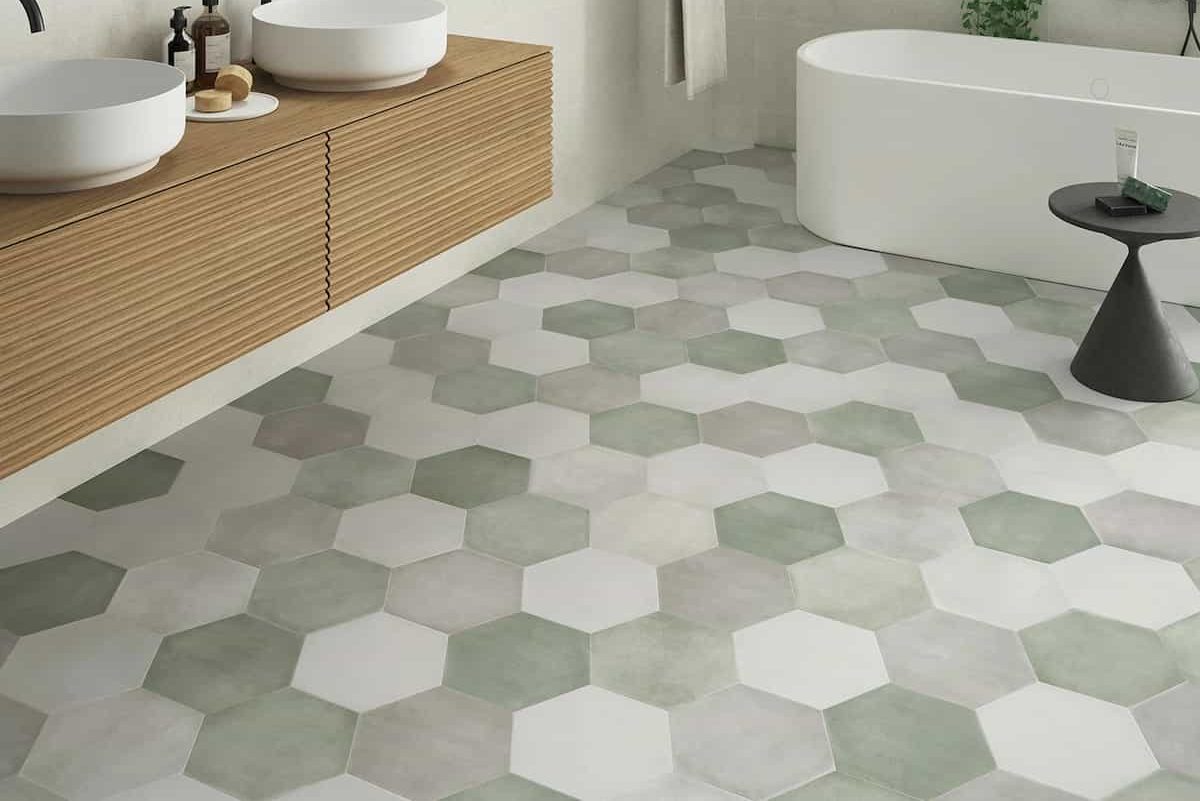
Belt and pulley power transmission: This sort of system reduces the speed of the electric motor in two stages, first by one belt and pulley and then by another belt and pulley in the second stage. This method is typically used in discontinuous balloons because to cost savings.
It gradually becomes the ballmill’s name. Typically, balloon power transmission systems employ AC motors. Diesel engines are also utilised in unique circumstances.
Spray dryers, sprayers, or spray dryers are employed to separate the powder from the slurry. The slurry from the mills is sprayed in the slurry tanks before entering them, which makes the slurry more homogeneous and increases its flexibility.
Pumping the slurry into a hot, cylindrical spray drier chamber with pistons of relatively high pressure causes the slurry to evaporate some of its water and convert into a powder with a particular amount of moisture and granulation.
The chamber air and water vapor are expelled from the spray dryer outlet after going through cyclones and dusting, and the result of the dryer—powder—is then loaded onto the conveyor belt from under the sheath and kept in powder silos.
The following variables affect the powder’s quality:
Slurry composition, particularly the plasticity, density, viscosity, and granulation of the body formula
The process of pressing the raw components into a tile body after they have been prepared as a powder is known as biscuit preparation.

The so-called semi-dry press, also known as the powder press, is employed when the water content of the body powder (granules) is greater than 4%. The term “dry press” is used when there is less than 4% water in the body powder.
There are two varieties of presses used in the tile industry:
Presses that use a hydraulic system include: – Mechanical or impact presses – Hydraulic presses. when deformation is caused by hydraulic energy.
The prepared biscuit is placed in the dryer, where the water content is reduced to less than 1%, making it ready for baking. The issue of lengthy drying in older tunnel dryers—which occasionally takes several days—has been solved by new vertical dryers, which can now dry clothes in as little as 20 minutes or less.
For a variety of reasons, the waste in tunnel dryers, which manifested as cracks and fractures, occasionally increased significantly.
Additionally, there were issues with the porcelain system of raw tiles (stacking tiles), the impact of bumps on the tile’s back, and other factors. It was painted on the lower tiles’ surface, and after glazing and baking, it was clearly apparent on the glazed surface. However, with the new drying procedure, these issues are almost completely gone.
Production of ceramic tiles during cooking
It takes 48 hours to bake biscuits and 12 hours to bake glaze in historic tunnel kilns. Fast baking ovens, also known as roller ovens, were the latest generation of ovens that were released into the market in 1997. These ovens have rollers inside of them on which biscuits are placed and moved into the oven.. These rollers are used in refractories and are built of alumina for high reception shock.
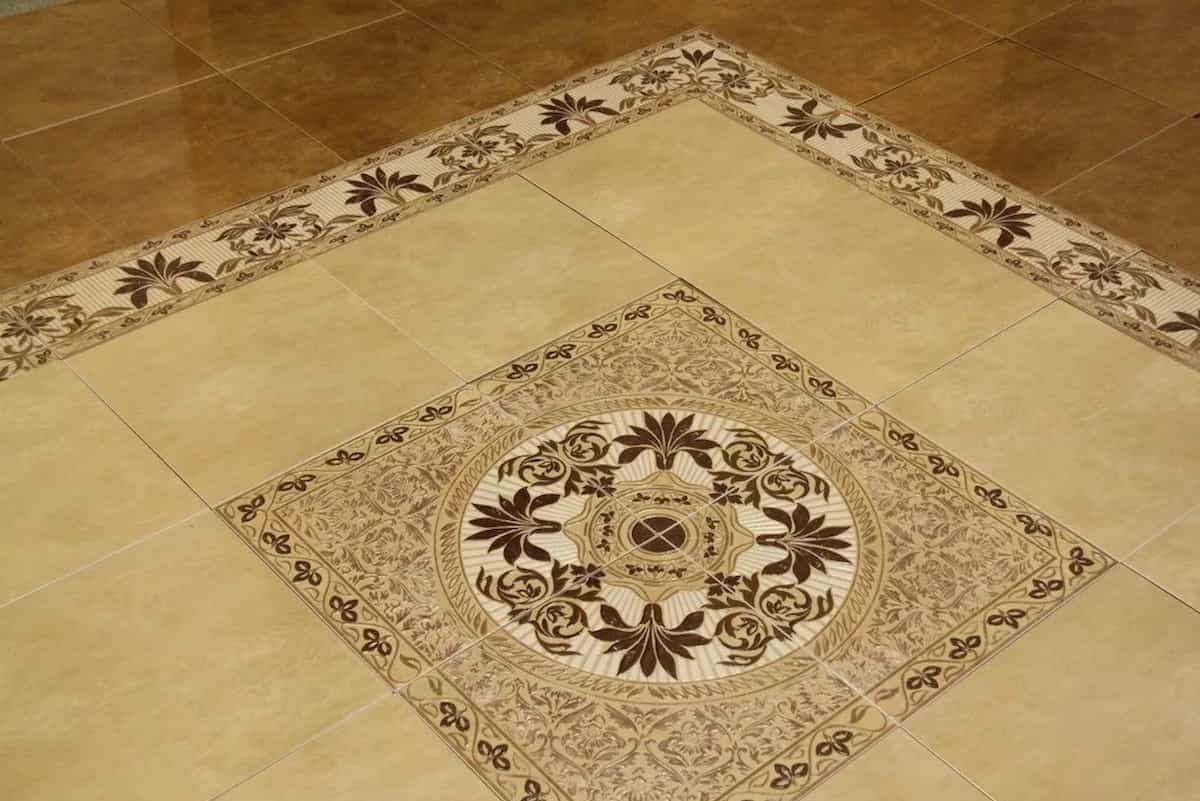
Row by row, the tiles enter the furnace on entrance rollers that are also constructed of metal with a rubber coating. Biscuit baking takes 30 minutes, while glaze baking takes 35 minutes.
For ceramic tiles, the glaze is a thin layer of glass that covers the body’s surfaces and is created by melting the body’s surface minerals.
There are fewer dough points in glazes because they always turn pasty and molten at a lower temperature than ceramic bodies.
When making floor and wall tiles, the glaze is applied to the biscuits’ surfaces primarily for aesthetic reasons, to strengthen their chemical and mechanical resistance, to seal the porous bodies and to make the surfaces hygienic.
increases its strength and stability against chemical agents and improves its density, hardness, gloss, and color.
Glaze enhances ceramic items’ density and the ability of liquids and gases to penetrate into the tissue, minimizing corrosion and other negative effects.
Continuous Furnace Manufacturing Process: Fixed furnaces are melted using this technique. The material enters the furnace and is charged by screw pressure after mixing and formulating. The material melts gradually thanks to a number of burners on both sides of the rectangular furnace’s interior, where thermal resistance is extremely great.
The other one emerges, and as soon as it does, the molten substance enters the cold water, where it is then poured into the bags by the vibrating tape.
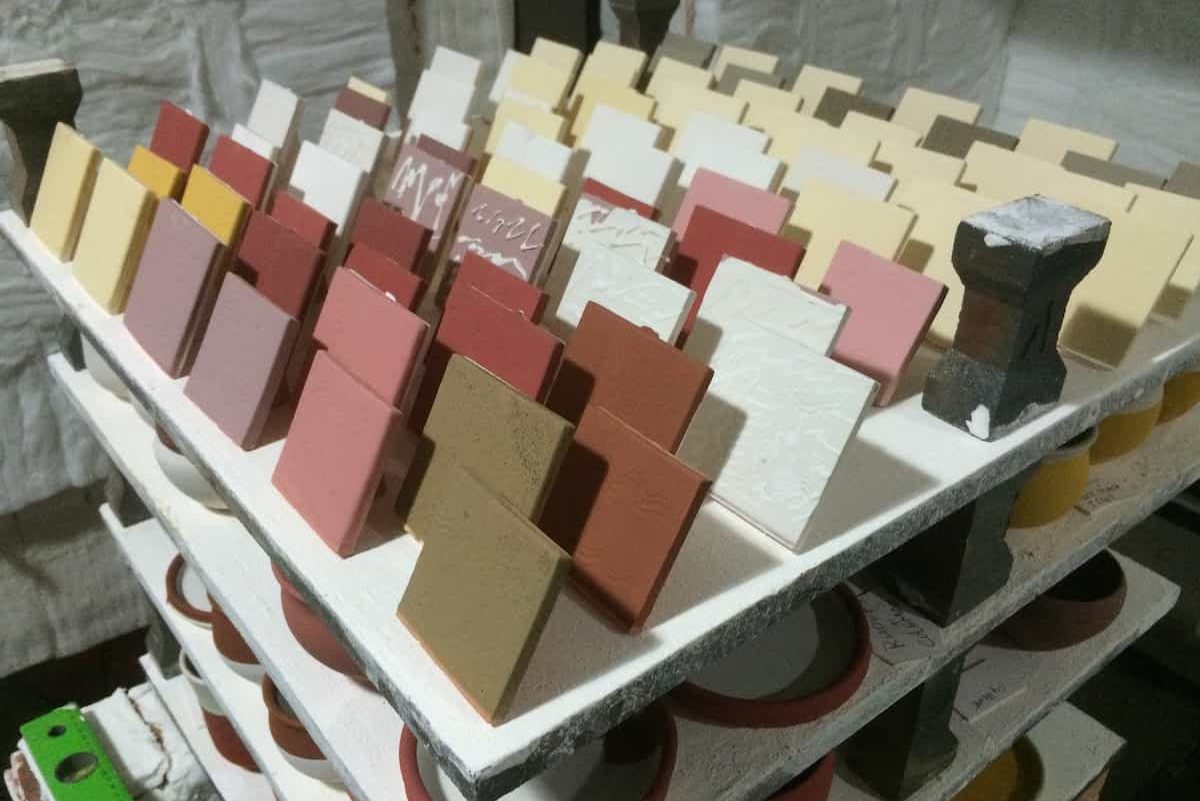
Ceramic Tiles Baking and Testing
Ceramic tiles are baked after glazing, which causes the tile and glaze to melt on the surface. Baking and testing are done transparently in the oven.
This is done by the glaze oven. The glaze oven’s temperature ranges from 1000 to 1040 degrees, which is lower than the biscuit oven’s temperature, and the time it takes for the tile to emerge from the oven is between 5 and 35 minutes.
The only differences between baking cookies and baking in an oven are the temperature and baking time.
The tile testers are put to the test for durability (bending, resilience) as soon as they come out of the kiln. The wheel applies pressure to the tile during the strength test. The tile breaks and moves out of place if there is a crack or Mac tile.
The tiles then proceed to the area for grading. There is a tool called a storage or buffer along the way that, if used in the packaging or grading portion, stores the tiles.
Production method for sorting and grading:
Grading
There could be numerous baking faults as well as glazing defects. Before packing, the tiles must be assessed according to their level of appearance. The size, resilience, and surface appearance of the tiles are generally used to grade them. The operators provide a grade to this procedure depending on tile flaws like (paleness, cracks, color, print quality, back glaze, welding, etc.).
The operator can manually or magically change the degree of the tiles. The tiles are separated into 5 grades in the typical production line; grades 1, 2, and 3 are readily accessible on the market, while grades 4 and 5 are stock and out of date.
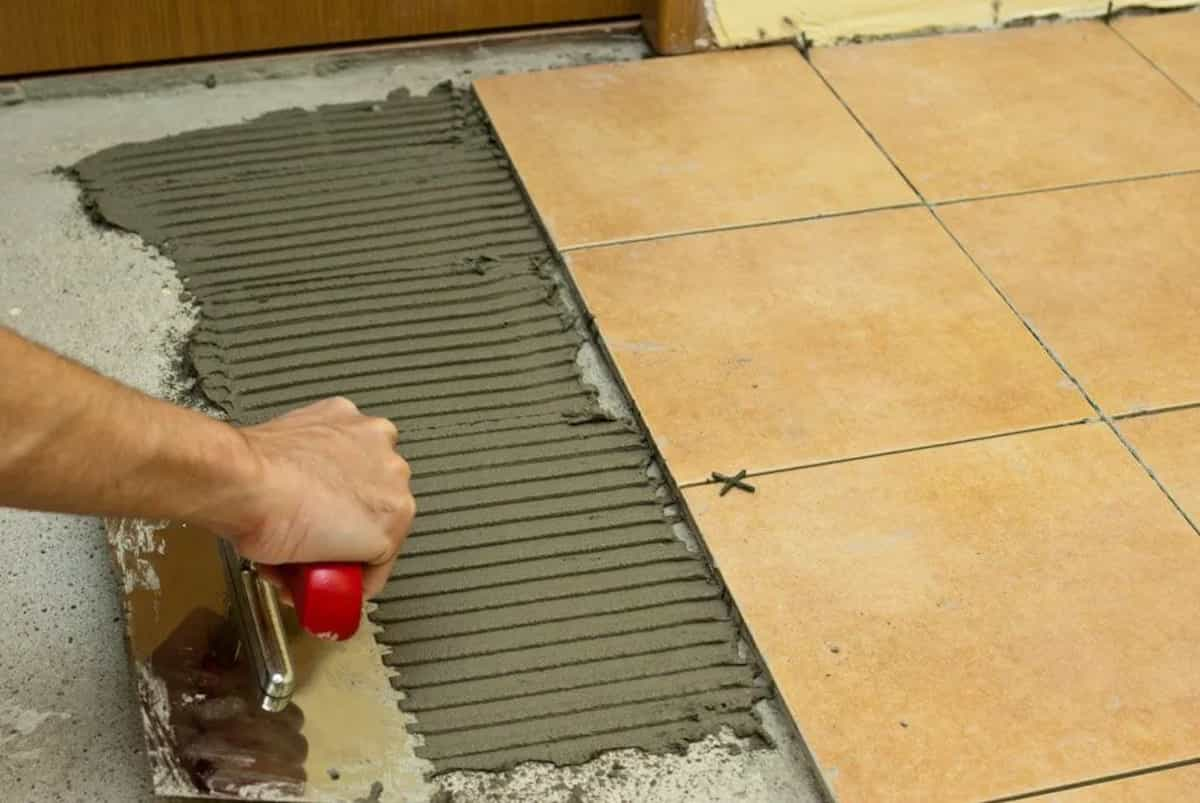
manufacturing of ceramics as a group
The tile is then moved to the sorting area, where two infrared sensors scan the mark on the tile and point them in the direction of the stickers. There are several stickers in this area that divide the tiles with various grades.
The stickers assemble and stack the identical symbol-containing tiles on top of one another. The area dictates how many tiles are placed on top of one another, and it is generally accepted that each batch of ceramic tiles is one square meter in size. The tiles are stacked in 10 pieces and sent to the packing area on the coastline where they are 25 x 40 in size.
production method for packaging
The split tiles are transferred for cartooning in this section. In the packing machine, the cartridges are packed around the tiles and glued after the tiles are organized in several rows by numerous arms in a row. The cartridges are then inserted into the inlet machine by the air suction device.
After the cartons have been removed from the shearing machine, each carton is placed on a pallet according to how much of it has been used, and a rotary machine is then used to wrap nylon around it. Forklifts transport the pallets to the warehouse, where they are prepared for distribution.
Our professional negotiators are eager to receive your message in order to begin a prosperous relationship for both sides.
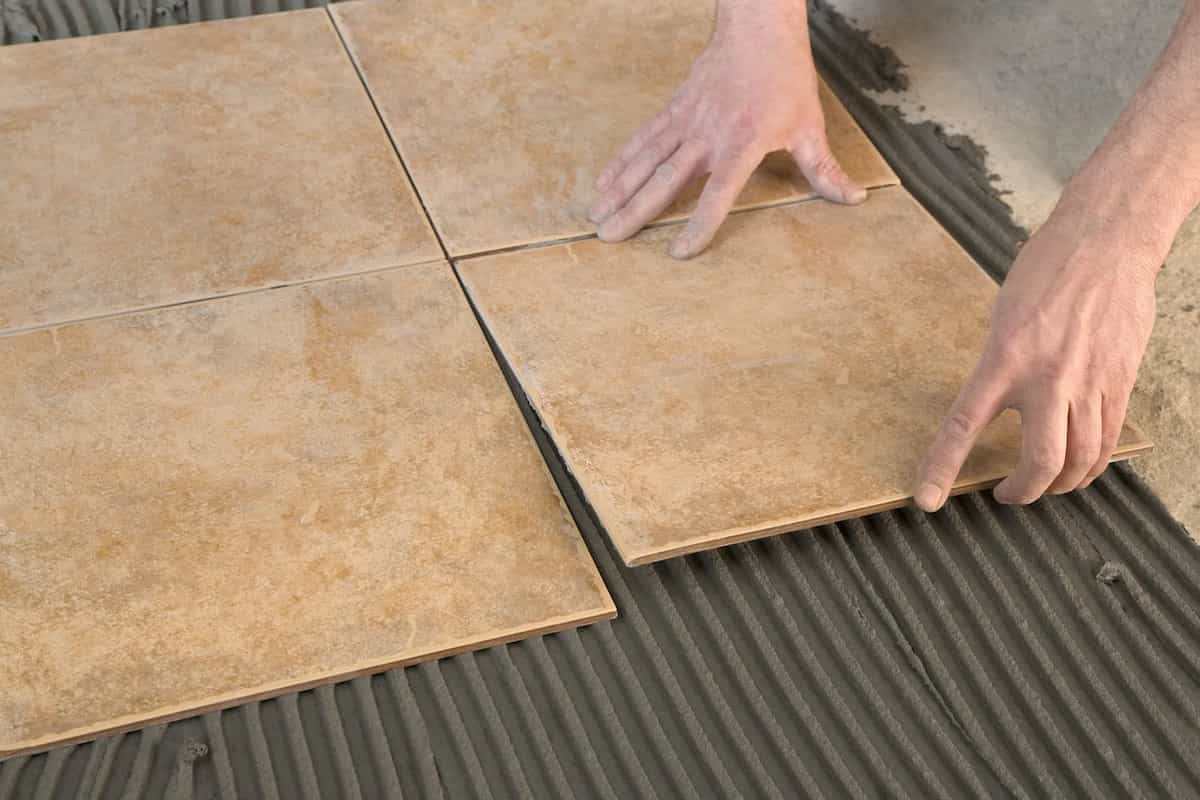











Your comment submitted.